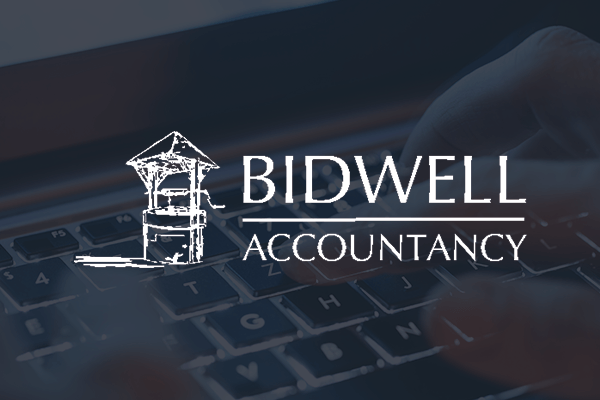February Newsletter

Welcome to this month’s news which includes changes to Corporation Tax coming into effect this April, relevant to businesses with profits at all levels. You can find out more about tax relief on pension contributions and lifetime limits - information that applies to everyone with a pension. We’ve also covered the thresholds for VAT registration and deregistration - a useful reminder for any businesses who are trading at or around £85,000. This is a rolling month-by-month calculation so it’s wise to keep a track of your last 12 months turnover, irrespective of your financial year. We’ve outlined your PAYE requirements for employing someone from overseas who is coming to work in the UK - it’s an admin heavy process to be aware of. And finally, don’t forget to check over the financial deadlines we’ve added at the end of the news that include dates up to mid-March.
Latest Blogs
Throughout the month we release blogs on our website which we will feel may help you with running your businesses.
What's the Employment Allowance?
Understanding Your Breakeven Point
Corporation Tax Rates from April 2023
Corporation tax changes April 2023
The Corporation Tax main rate will increase to 25% from 1 April 2023 for companies with profits over £250,000. A Small Profits Rate (SPR) of 19% will also be introduced from the same date for companies with profits of up to £50,000 - ensuring these companies pay Corporation Tax at the same rate as currently.
Where a company has profits between £50,000 and £250,000 a marginal rate of Corporation Tax will apply that bridges the gap between the lower and upper rates. The lower and upper limits will be proportionately reduced for short accounting periods of less than 12 months and where there are associated companies.
The effect of marginal relief is that the effective rate of Corporation Tax gradually increases from 19% where profits exceed £50,000 to 25% where profits are more than £250,000.
The amount of Corporation Tax payable will be found by multiplying taxable profits and gains by the main rate of 25% and deducting marginal relief. For the fiscal year 2023, the marginal relief fraction will be 3/200. HMRC also offers an online calculator that can be used to check basic eligibility for marginal relief. The calculator can be found at www.tax.service.gov.uk/marginal-relief-calculator.
For certain businesses it may be prudent to reconsider associated company relationships before April 2023. This will help avoid partial loss of the lower 19% rate or marginal tapering relief.
Limits to tax relief for pension contributions
Under current rules, you can claim tax relief for your private pension contributions. The annual allowance for tax relief on pensions is £40,000 for the current tax year. There is a three year carry forward rule that allows you to carry forward any unused amount of your annual allowance from the last three tax years if you have made pension savings in those years. There is also a lifetime limit for tax relief on pension contributions. The limit is currently £1,073,100 and will remain frozen at that level until at least April 2026.
You can get tax relief on private pension contributions worth up to 100% of your annual earnings, subject to the overriding limits. Tax relief is paid on pension contributions at the highest rate of Income Tax paid.
This means that if you are:
- A basic rate taxpayer you get 20% pension tax relief
- A higher rate taxpayer you can claim 40% pension tax relief
- An additional rate taxpayer you can claim 45% pension tax relief
- The first 20% of tax relief is usually automatically applied by your employer with no further action required if you are a basic-rate taxpayer. If you are a higher rate or additional rate taxpayer, you can claim back any further reliefs on your Self-Assessment tax return.
The above applies for claiming tax relief in England, Wales or Northern Ireland. There are regional differences if you are based in Scotland.
When you must register for VAT
The taxable turnover threshold, that determines whether businesses should be registered for VAT, is currently £85,000.
The taxable turnover threshold that determines whether businesses can apply for deregistration is £83,000.
It was confirmed as part of the Autumn Statement 2022 measures that the taxable turnover registration and deregistration thresholds will be frozen at the current rates until 31 March 2026.
Businesses are required to register for VAT if they meet either of the following two conditions:
- At the end of any month, the value of the taxable supplies made in the past 12 months or less has exceeded £85,000; or
- At any time, there are reasonable grounds for believing that the value of taxable supplies to be made in the next 30 days alone will exceed £85,000.
- The registration threshold for relevant acquisitions from other EU Member States into Northern Ireland is also £85,000.
Businesses with no physical presence in the UK may also have a liability to be VAT registered in the UK if they supply any goods or services to the UK.
PAYE and overseas employees
There are a multitude of rules and regulations that you must be aware of when you employ someone from abroad who is coming to work in the UK.
HMRC’s guidance (entitled New employee coming to work from abroad) sets out some important issues to be aware of when taking on a new employee from abroad.
This includes the following:
- Check an employee’s right to work in the UK
- Paying tax and National Insurance contributions
- National Insurance contributions
- Modified PAYE arrangements
- Payments
- Work done in and outside the UK
- Short term business visitors
- UK employers must operate PAYE and NICs for employees from abroad regardless of whether they are working on a temporary or permanent basis. This also applies to seconded employees who are being paid by an overseas company. The UK employer is responsible for reporting earnings and PAYE deductions in the same way as for a UK employee.
New employees from abroad will not have a P45 so you will need to obtain all the pertinent information to set them up and report to HMRC on a Full Payment Submission (FPS).
This includes their full name, gender, date of birth, full address and National Insurance number (if the employee knows it). The employer will also need a completed starter declaration and should enquire if the new employee has an existing student loan.
Tax Diary February/March 2023
1 February 2023 - Due date for corporation tax payable for the year ended 30 April 2022.
19 February 2023 - PAYE and NIC deductions due for month ended 5 February 2023. (If you pay your tax electronically the due date is 22 February 2023)
19 February 2023 - Filing deadline for the CIS300 monthly return for the month ended 5 February 2023.
19 February 2023 - CIS tax deducted for the month ended 5 February 2023 is payable by today.
1 March 2023 - Due date for Corporation Tax due for the year ended 31 May 2022.
2 March 2023 - Self-Assessment tax for 2021-22 paid after this date will incur a 5% surcharge unless liabilities are cleared by 1 April 2023, or an agreement has been reached with HMRC under their time to pay facility by the same date.
19 March 2023 - PAYE and NIC deductions due for month ended 5 March 2023 (If you pay your tax electronically the due date is 22 March 2023).
19 March 2023 - Filing deadline for the CIS300 monthly return for the month ended 5 March 2023.
19 March 2023 - CIS tax deducted for the month ended 5 March 2023 is payable by today.

Unit 157, Milton Keynes Business Centre,
Foxhunter Drive, Milton Keynes,
Buckinghamshire, MK14 6GD
Bidwell Accountancy




